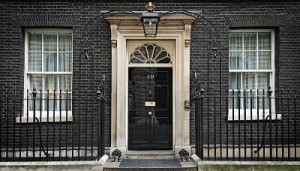What the PR Industry Can Learn from the ‘Government Nudge’ Unit
 A couple of weeks back I stumbled across a fantastic article in the Guardian about the UK government’s ‘nudge unit’. For those not in the know, the ‘nudge unit’ is the cabinet office’s behavioural insights team made up of a team of 13 academics from the fields of economics, psychology and advertising.
A couple of weeks back I stumbled across a fantastic article in the Guardian about the UK government’s ‘nudge unit’. For those not in the know, the ‘nudge unit’ is the cabinet office’s behavioural insights team made up of a team of 13 academics from the fields of economics, psychology and advertising.
As it’s name suggests the unit is named after Nudge, a 2008 book by Richard Thaler and Cass Sunstein and based upon its guiding principle that sensible ‘choice architecture’ can successfully nudge people toward the best decisions. The government hopes that by ‘nudging’ people to make better choices, it will reduce costly state intervention or legislation.
The unit’s Director, David Halpern claims his team will ‘save the government billions of pounds’ and it has enjoyed some notable success so far, such as enhancing Jobcentre employment rates, as well as increasing the number of people who pay car tax and court fines. This has lead to both international interest and private investment and as Cabinet Office Minister Francis Maude pointed out, part-privatisation of the unit will ‘combine the benefits of private sector experience and investment with the innovation and commitment from staff leadership’.
I’ve been following the unit’s fortunes closely since it was launched and to me, a lot of its work is grounded in behavioural science and persuasive communication. When you consider that PR seeks to communicate and influence behaviour, the role of public relations and the work the unit undertakes is perhaps more closely linked than you may first imagine. Indeed, Jon Clements of Metamorphic PR, Nigel Sarbutts of Brand Alert and I enjoyed a healthy discussion on Twitter about such creative problem solving and Jon described the unit’s work as ‘public relations principles at work’.
Here’s some principles that I think the PR should adopt from the ‘nudge unit’:
- Use research to inform approach
The ‘nudge unit’ is made up of various academics and unsurprisingly its approach is research heavy. The opposite is often true of PR and many agencies tend to rely on intuition and experience, or in some cases Groupthink when devising activity. Few take a data driven or research heavy approach to problem solving. - Problem first, technology second
Sounds simple right? You’d like to think that agencies would offer a strategy that can genuinely be applied across different media. But in my experience, especially with teams and more importantly P&L divided along the lines of digital, consumer, experiential etc., you’ll often find teams pushing their own agenda, rather than working together to find the best solution. - Simple, personalised and visual
The Guardian article mentions how the unit increased the number of people paying their car tax by creating communication that is simple, personalised and visual. PRs too often get bogged down in BS and jargon, when the real secret to earning attention in the digital age is perfectly encapsulated in those three words: simple, personalised, visual. - Test, analyse and optimise
Again, it all comes back to numbers. The ‘nudge unit’ continually test, analyse and optimise activity to ensure they get the best results. Until the PR industry takes measurement, analysis and evaluation seriously (although, some progress has been made), we won’t fully understand the who, what and why of successes or failings. - Tapping into outside expertise
The unit is made up of people from a range of backgrounds, but they’re all united by the fact they are experts in their respective fields. I’m adamant that as an industry we should not be afraid to borrow, develop and copy ideas, models and thinking from other disciplines. There’s a lot we can learn from other industries and we should be brave enough to seek out these opportunities.
What’s your take on the ‘nudge unit’ and how do you think the PR industry can learn from it?













